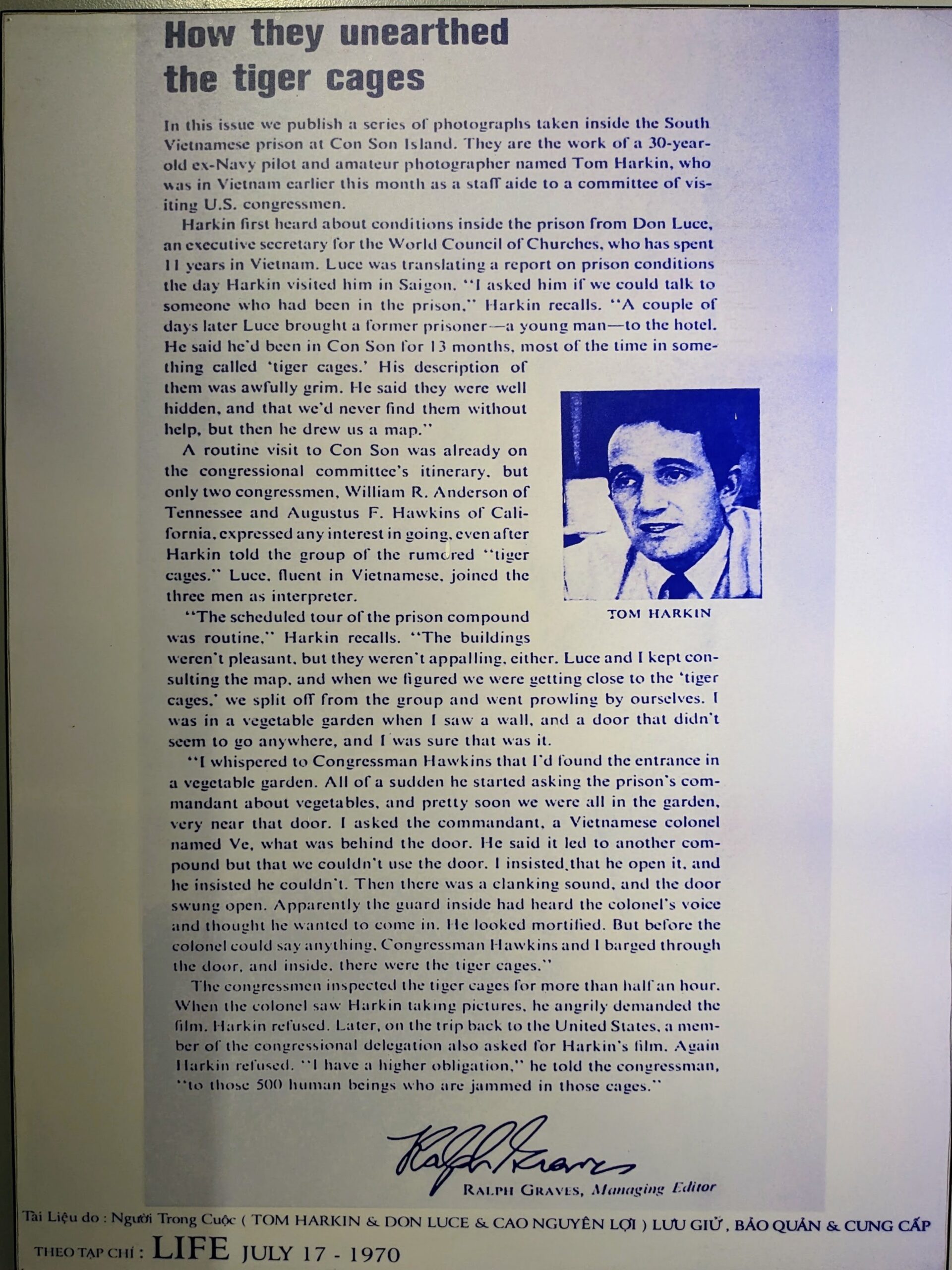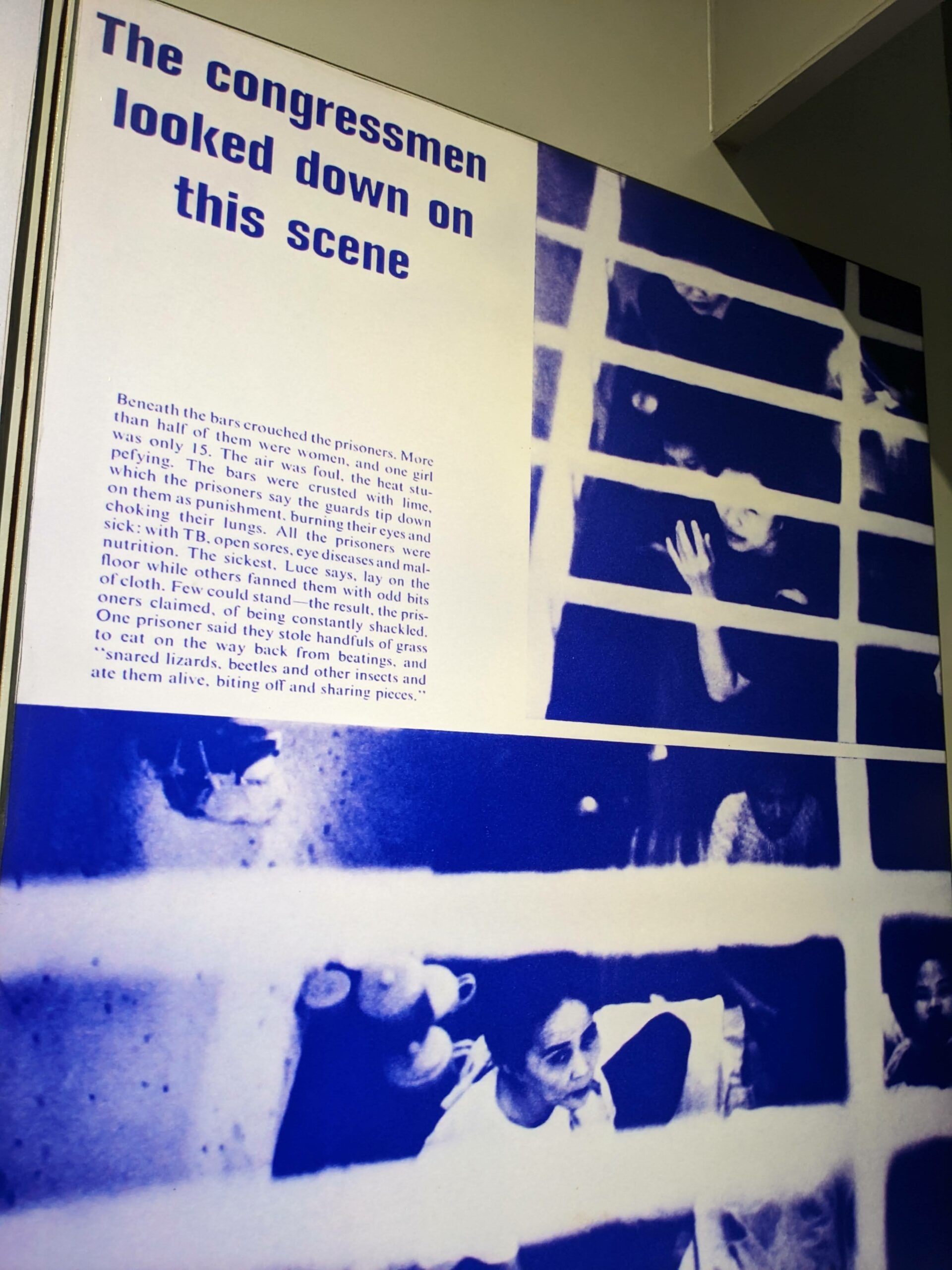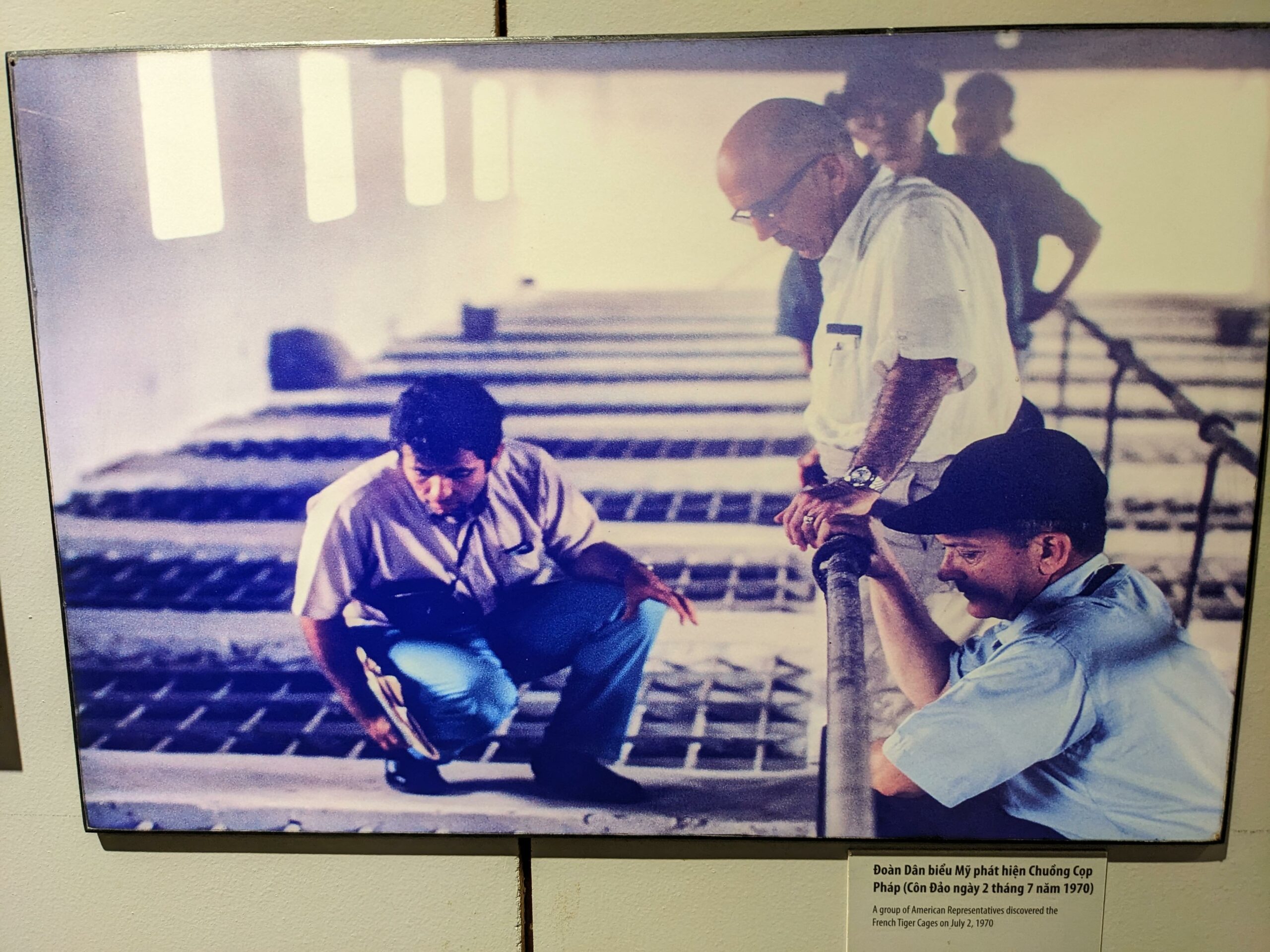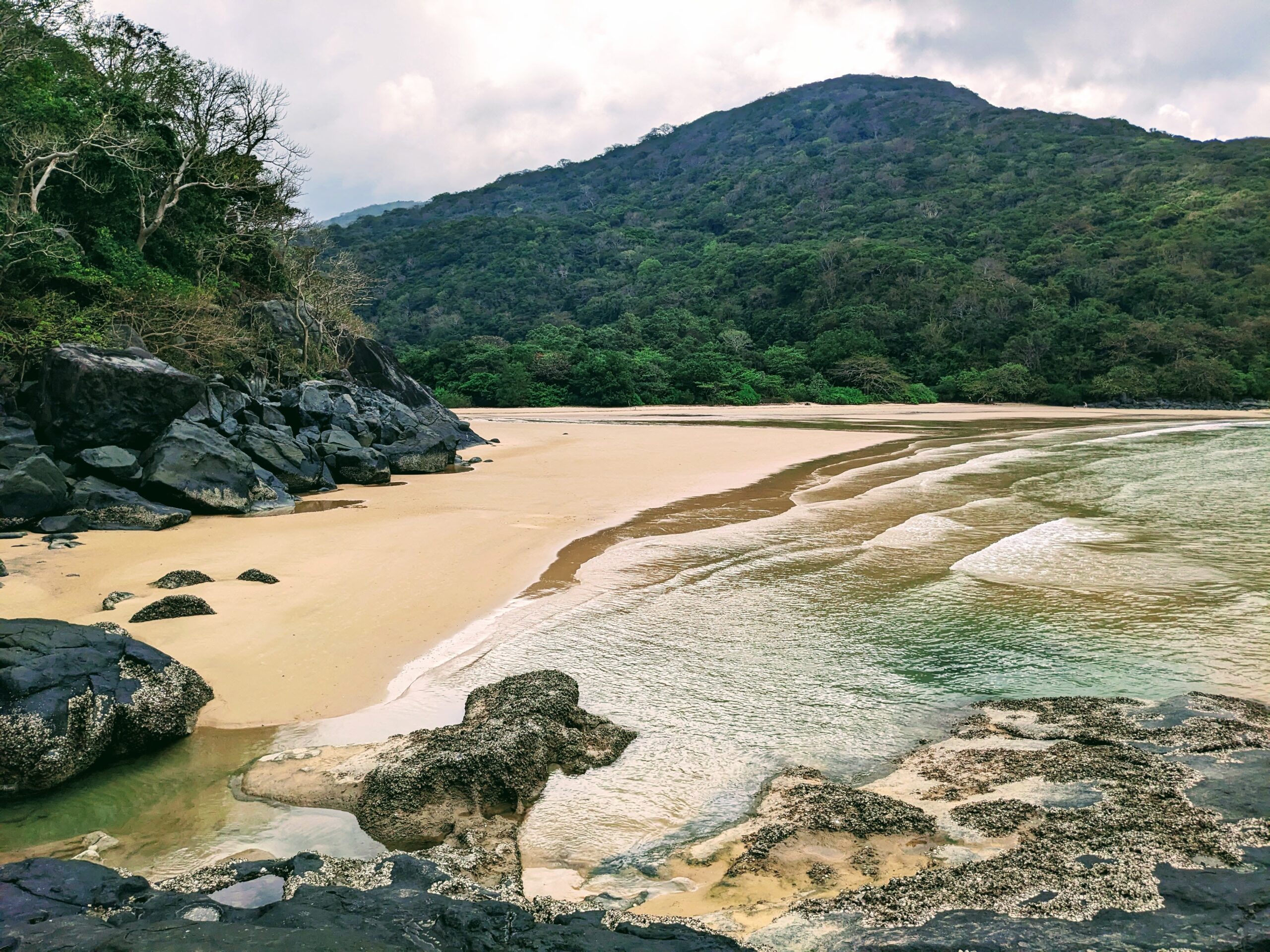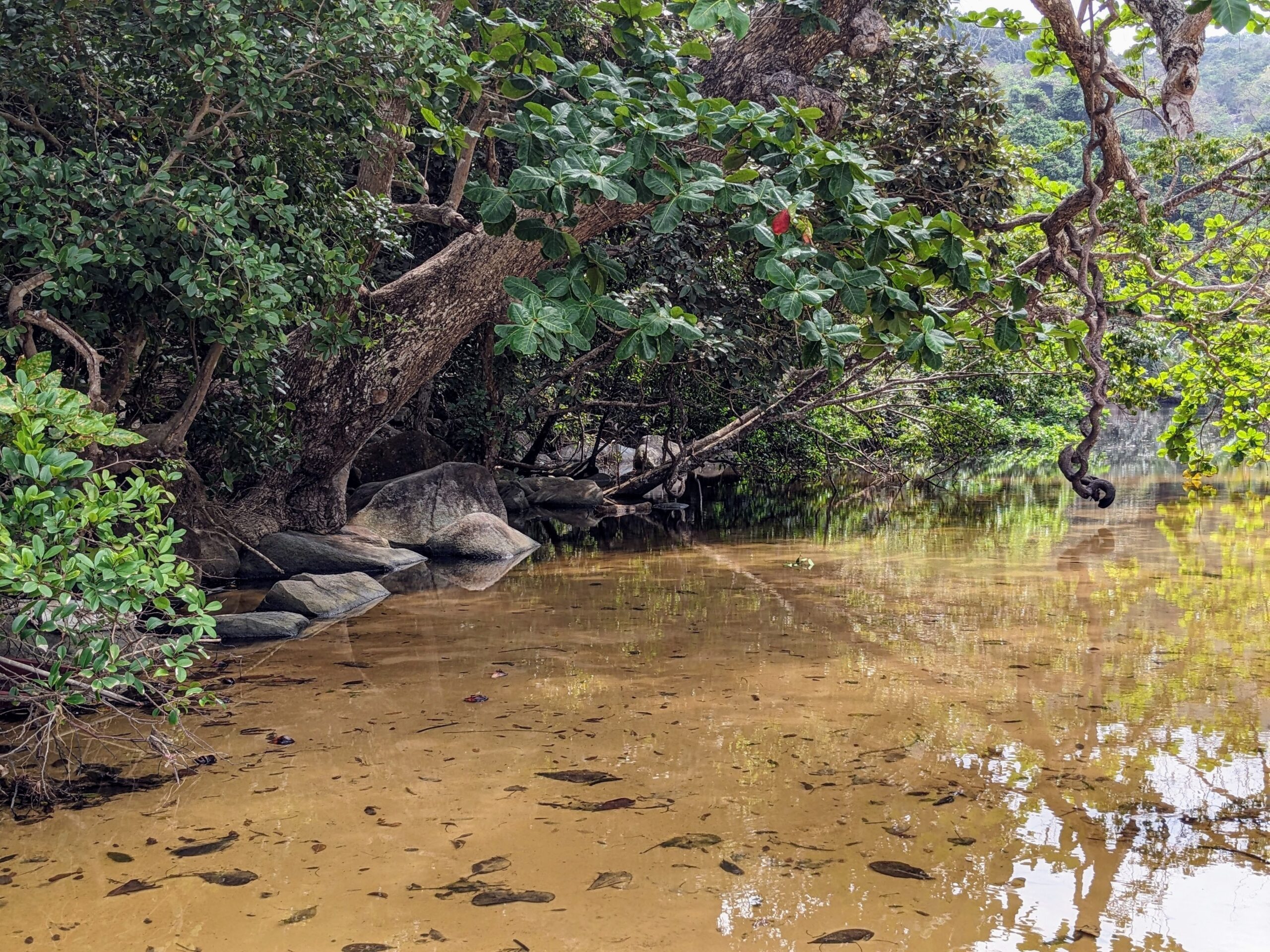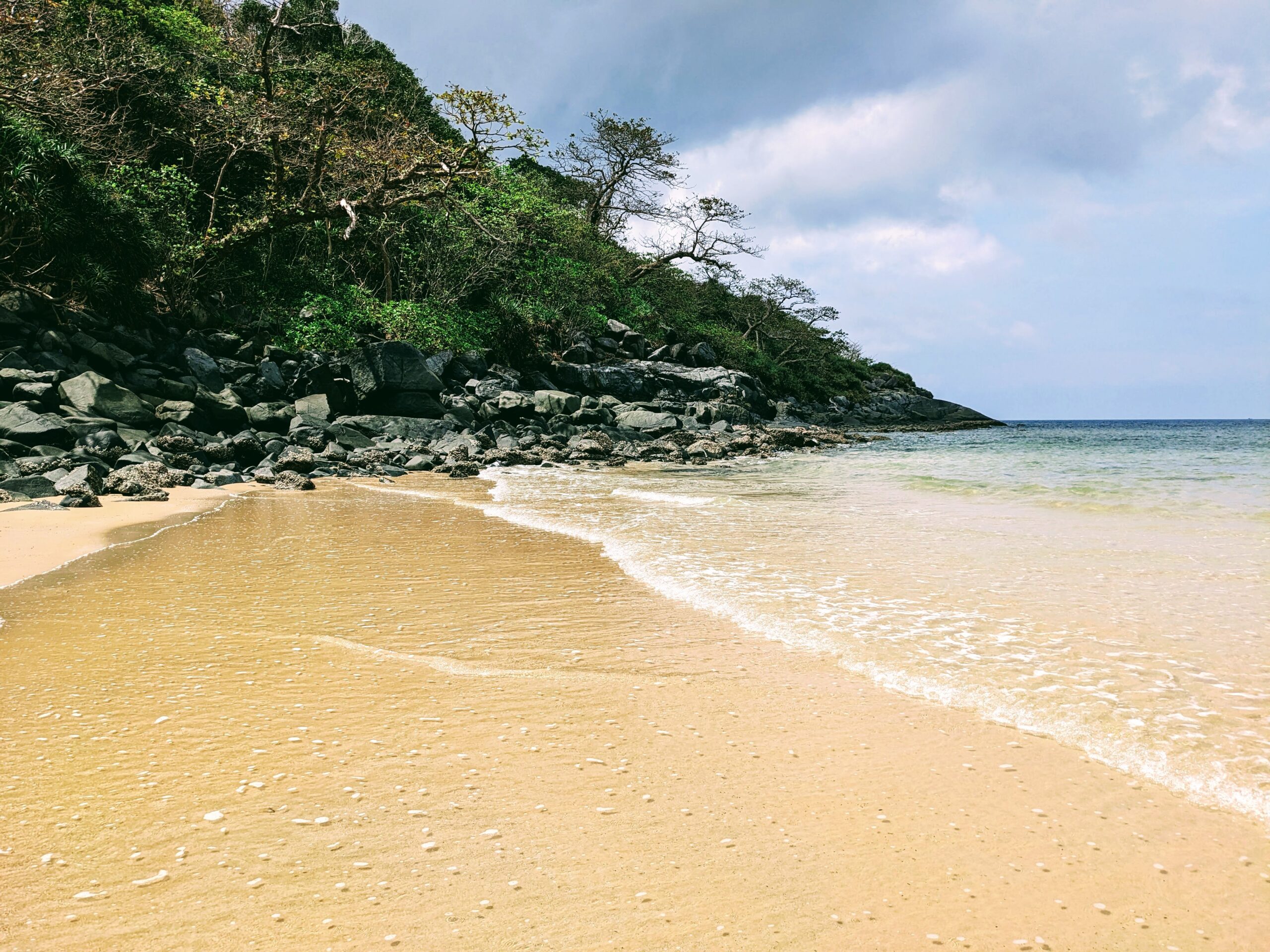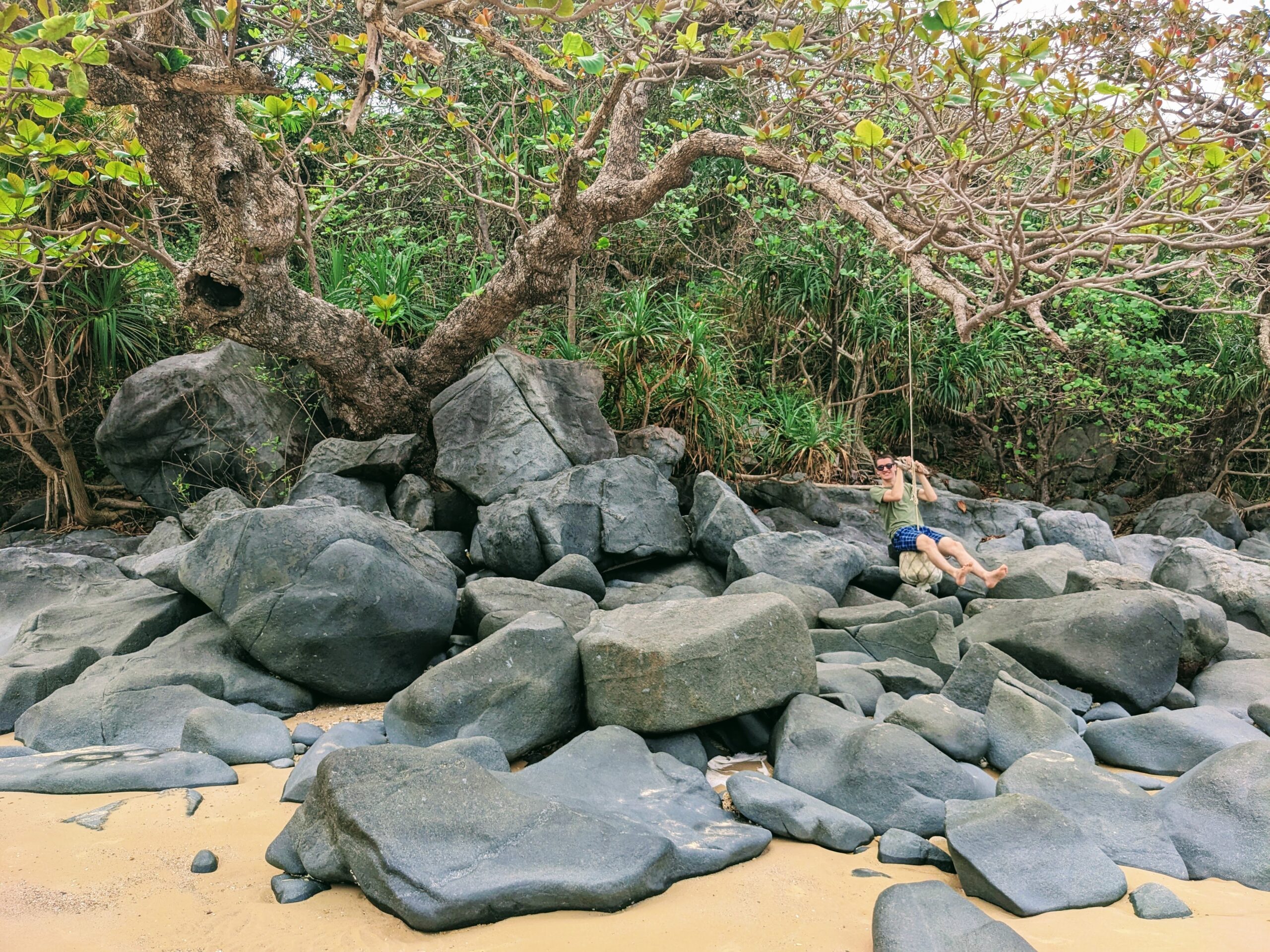After bidding farewell to Mum and Dad (who were off to northern India), we set our sights on Côn Đảo, an archipelago in the South China Sea. We’ve moved on about every third day for the past 6 months, so we decided it was about time to slow down for a few days to catch up on planning and writing this blog. It turns out that we’re terrible at this, though, so we still have plenty to talk about!
We set off from Ho Chi Minh City (HCMC) on a two-day journey via Sóc Trăng, a city in the Mekong Delta.
We stayed in Sóc Trăng overnight and made friends with the neighbourhood children near our accommodation, who turned up en masse to check us out as soon as we arrived.
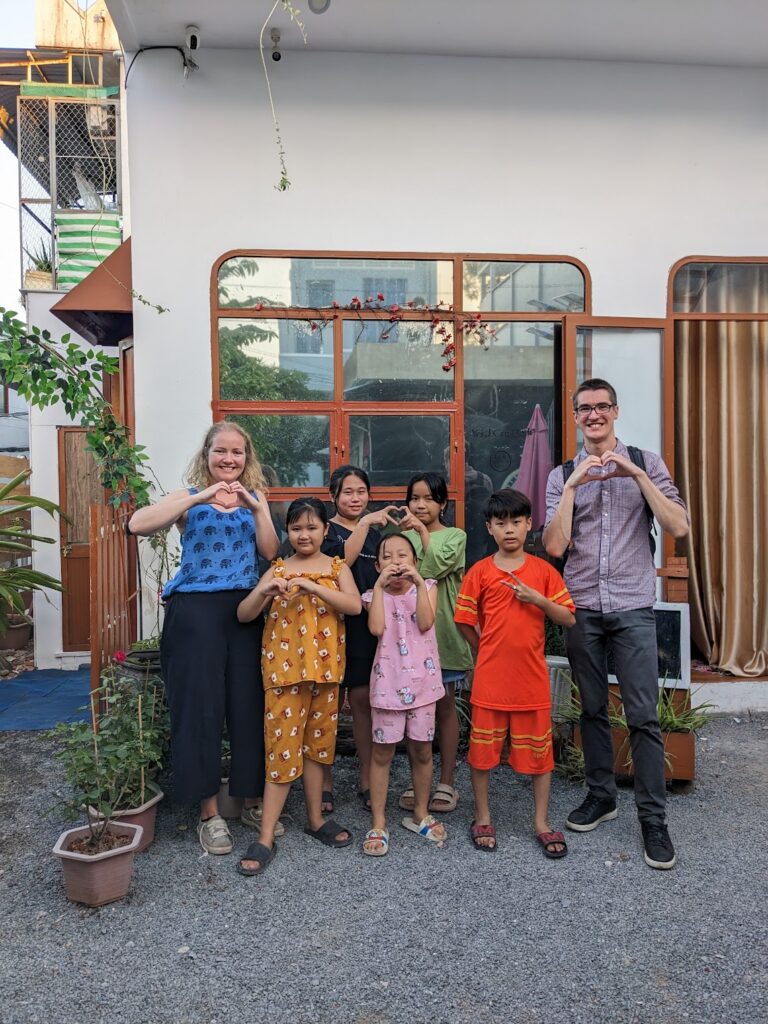
The next day, we caught the SuperDong ferry (what a name) across to Côn Đảo. It was the roughest 3 hours I’ve ever spent at sea, with predictable consequences for me. Meanwhile, in order to distract himself from planning our escape route (the conditions were quite scary), Oli was busy calculating a ‘chunder rate’ for those sitting in our part of the boat. It was an impressive 22% – at least I wasn’t alone, for once!
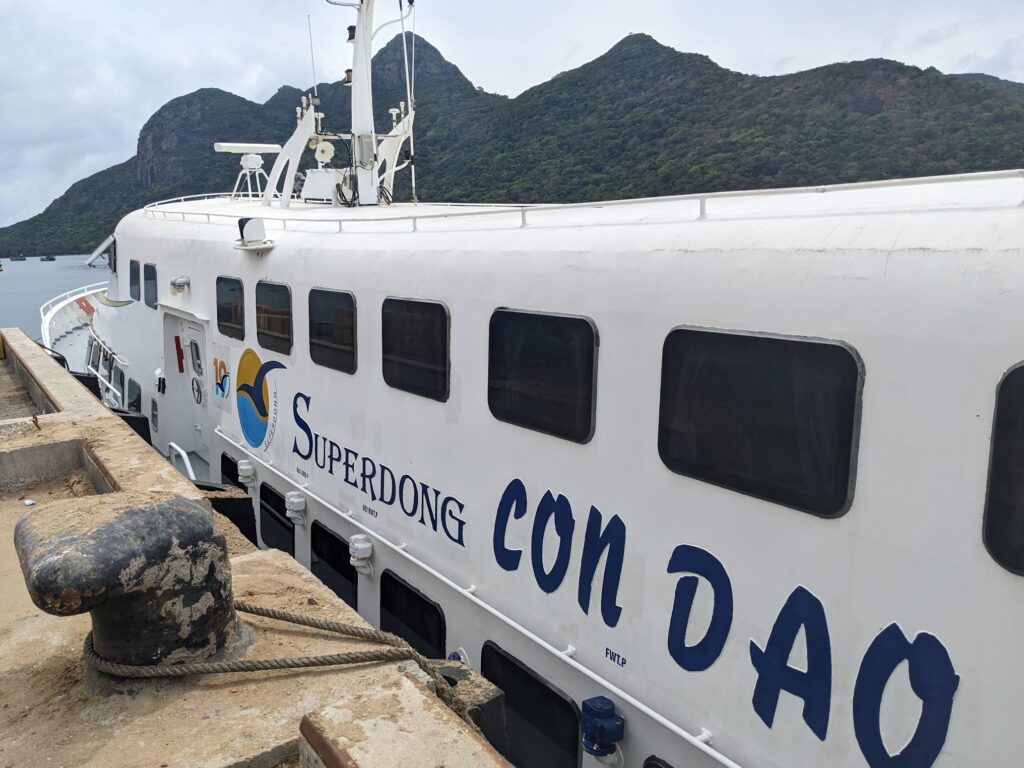
Thankfully, Côn Đảo was definitely worth the long and eventful journey. Our first view of the main island was exploring the peaceful streets of its capital, Côn Sơn Town. We’d read that it would be quiet, but we couldn’t quite believe how quiet!


Although the island now appears to be a relaxed, carefree place, its dark history as a notorious prison island used by both the French and the American-backed South Vietnamese government is what attracts most (domestic) visitors. With the lecture we received in Matera not to take things at face value still ringing in our ears months later, we decided we couldn’t just go to the beach and ignore the island’s past. So, we braced ourselves and began by visiting the Bảo Tàng Côn Đảo Museum, which introduced the island’s history, including involvement from the British East India Company, the Portuguese and the French from 1861. The museum also gave us some insight into the horrors of the prisons on the island (known as ‘hell on earth’) and the treatment of the prisoners, who were subjected to cramped and unsanitary conditions, hard labour and torture. In the latter years, this was an attempt to force the prisoners to denounce their communist beliefs.
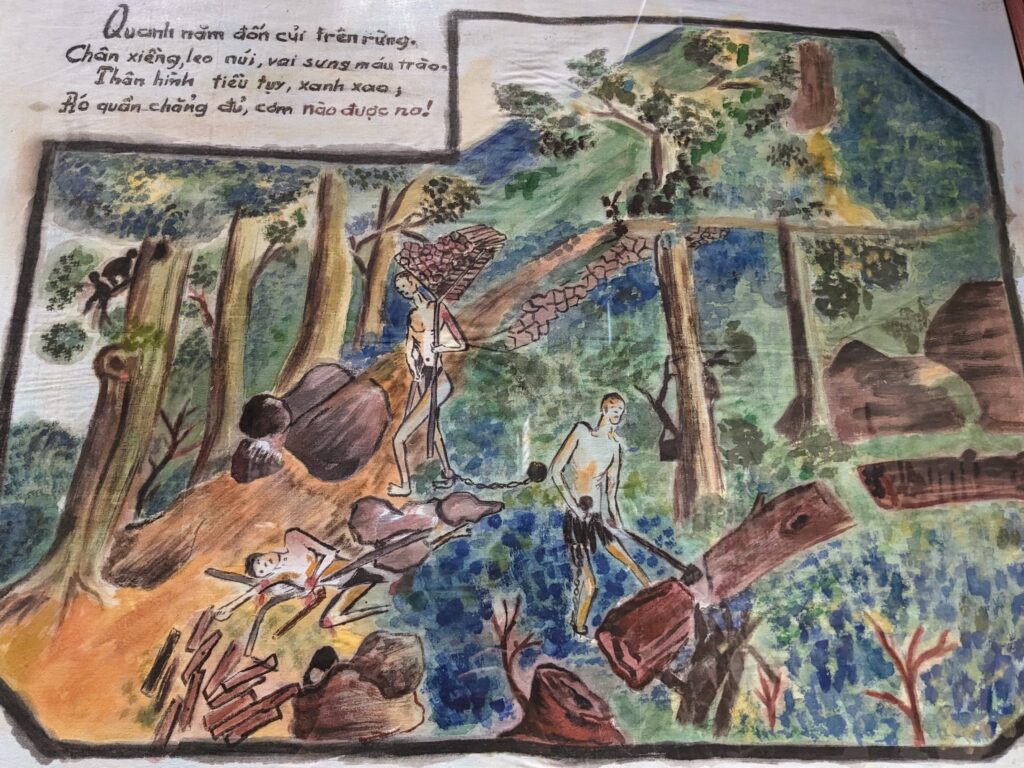
It was a helpful (if harrowing) introduction that continued until the lights abruptly went out and we were left in pitch black in the windowless musuem. At first, we thought it was a powercut, but no one came to retrieve us from the darkness and we eventually concluded that the museum staff had cut the power so they could leave early for lunch! We switched on our torches and found our way outside.
Our next stop were the notorious tiger cages, a hidden part of one of the prison complexes where prisoners were kept in even more horrendous conditions than in the main prison. Each cell had a metal slatted roof, through which guards poked sharp sticks and poured quicklime, giving prisoners chemical burns.
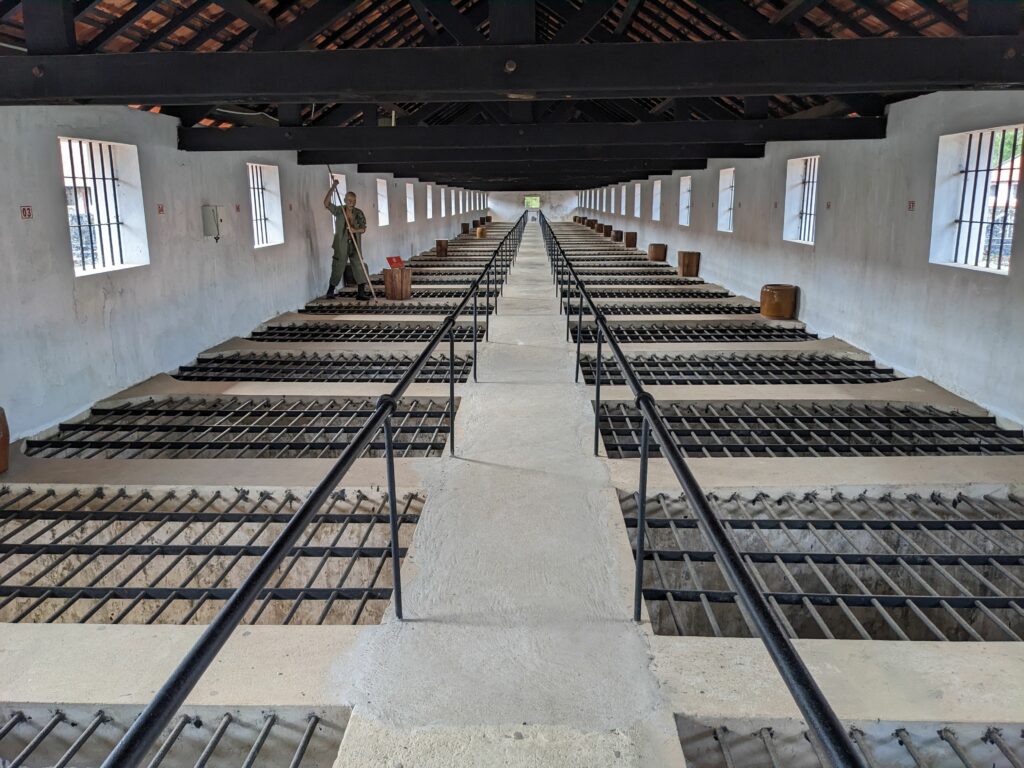
We’d learnt that morning how an American delegation had discovered the existence of the rumoured tiger cages based on a map drawn by an ex-prisoner in 1970, and how the prisons were subsequently shut down. It was pretty chilling to see them in person, and neither of us could believe how recently they had been used or bring ourselves to step into any of the cells.
Feeling suitably enlightened about the history of the island, we headed to the town beach to embrace its contemporary charms (and cheer ourselves up).
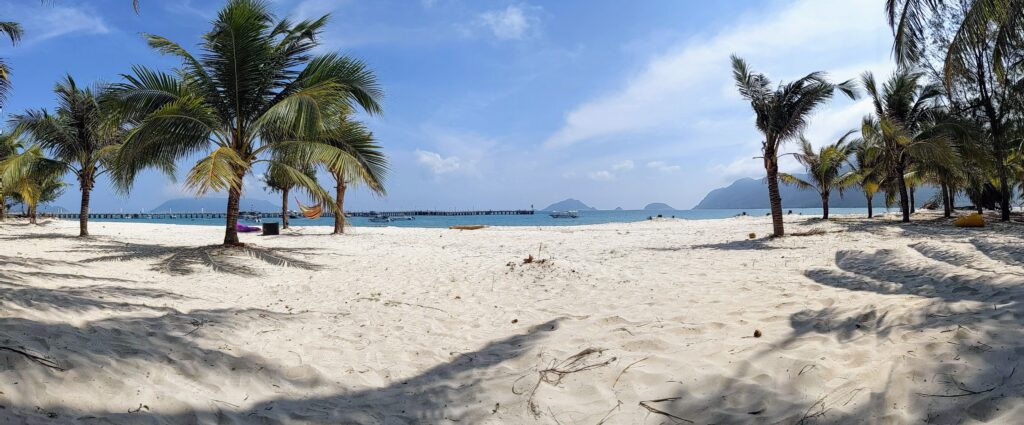
We’d read that hiring a moped was pretty much essential to get around the island, but in the spirit of being ‘nearly neutral’ (and because we are stubborn), we hired some bicycles instead and had a very pleasant time pootling around the traffic-free streets.
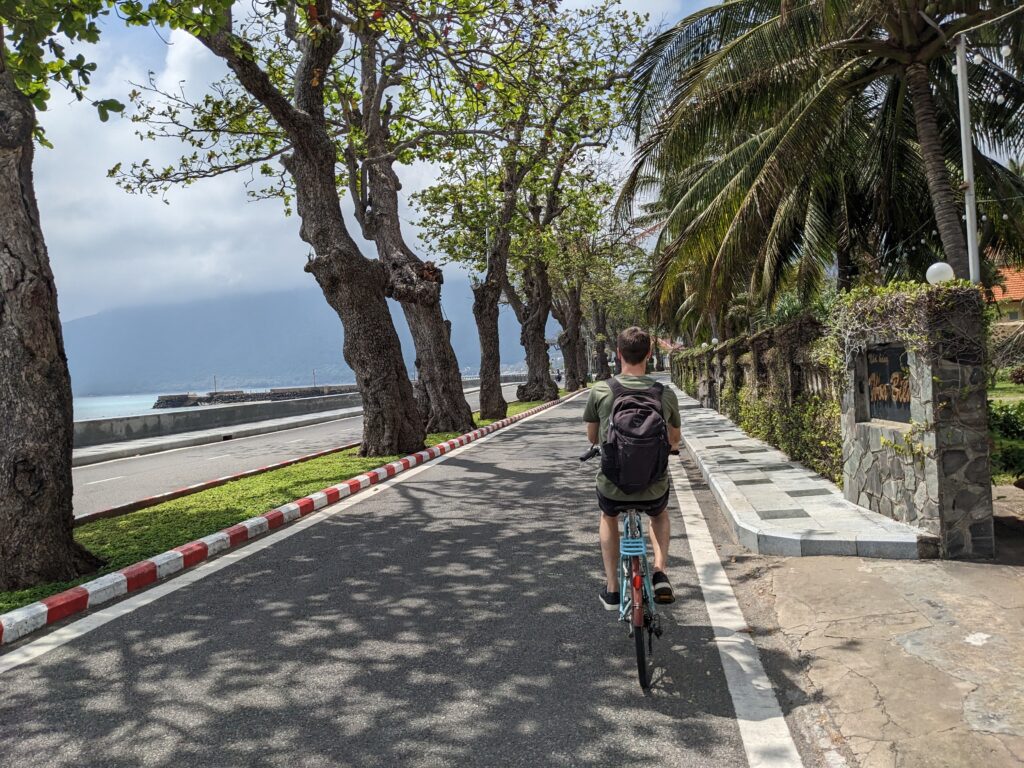
At least, we were having a very pleasant time until we had the idea of cycling to the other side of the island to one of its best beaches, Bãi Đầm Trầu. We looked at the route and elevation graph, decided there was no way we could sensibly cycle it in the heat, let the idea sit for half a day and then decided we’d be missing out if we didn’t at least try. Typical!
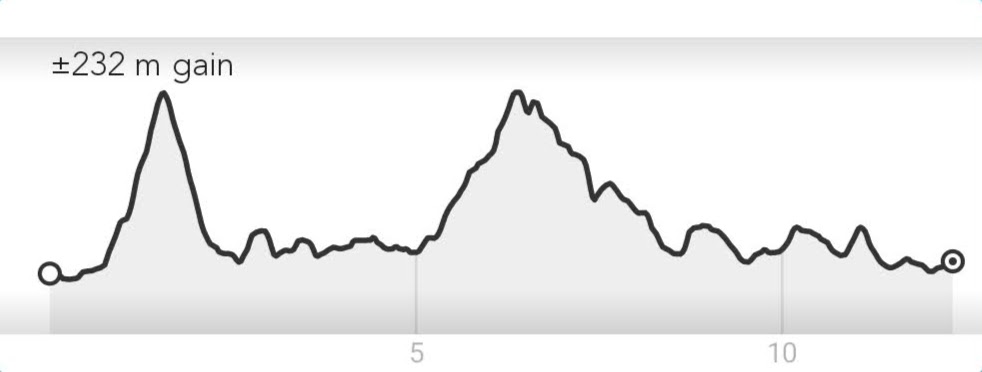
I know the elevation graph doesn’t look that bad (we’d happily walk this and more), but I would like to point out that it was 32 degrees and our bikes were…rudimentary! It was quite a cycle, but on the way we did meet some macaques and even some giant black squirrels, and the beautiful beach at the end made it feel very worthwhile.
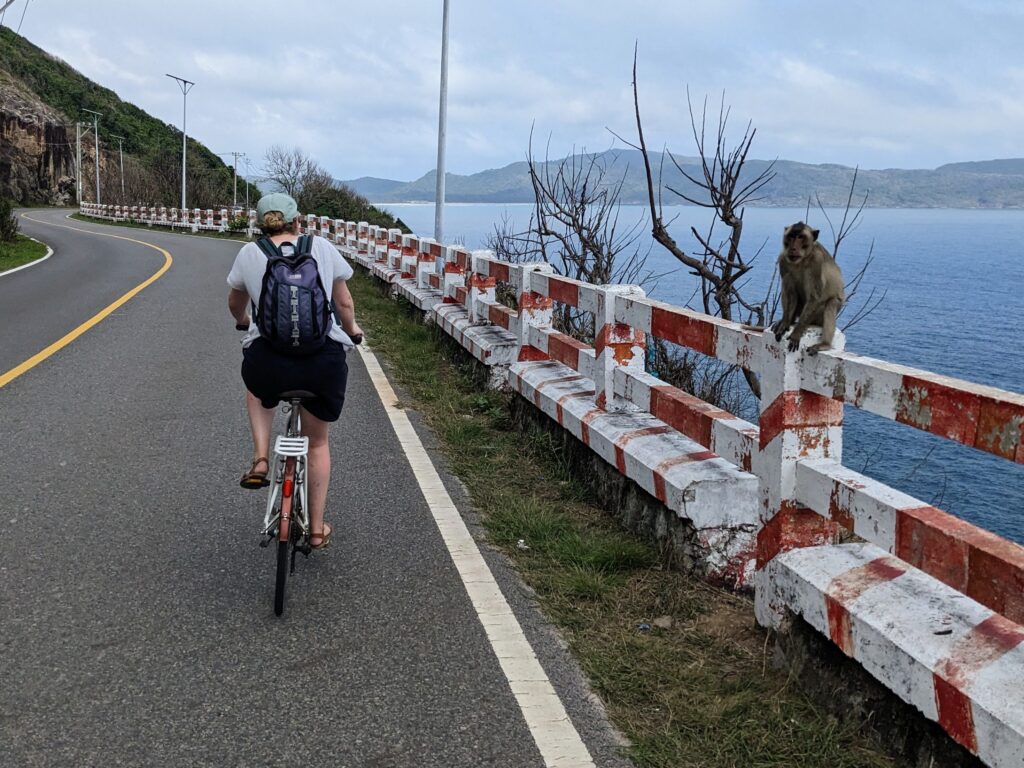
We’d read about a ‘secret’ beach that could be reached by climbing over some rocks at the end of the main beach, and it was stunning, so this is where we spent most of our time.
However, the main beach did have one big draw – it was right at the end of the island’s only runway, so we could watch the (infrequent) flights coming in to land over the beach. The planes felt so close we could practically touch them! When Oli was tracking flights so that we knew what was on its way, it really brought home that the islands can be reached by a quick 45-minute hop from Ho Chi Minh City rather than our two-day epic. We desperately tried to feel virtuous about our journey rather than just a bit silly for how long it had taken!


We celebrated our mammoth cycle (and not being eaten by any angry monkeys – some of them really didn’t like us cycling past, especially the time I called out, “Hello, friends!” to them) by visiting Kem Côn Đảo Dừa Đất, an incredibly popular local institution that was dangerously close to our hotel. Their speciality was a delicious coconut ice cream with tender curls of green coconut, served in a coconut bowl and accompanied by coconut water. Never has ice cream felt so well-deserved (although I should probably confess that this isn’t the only time we visited)!
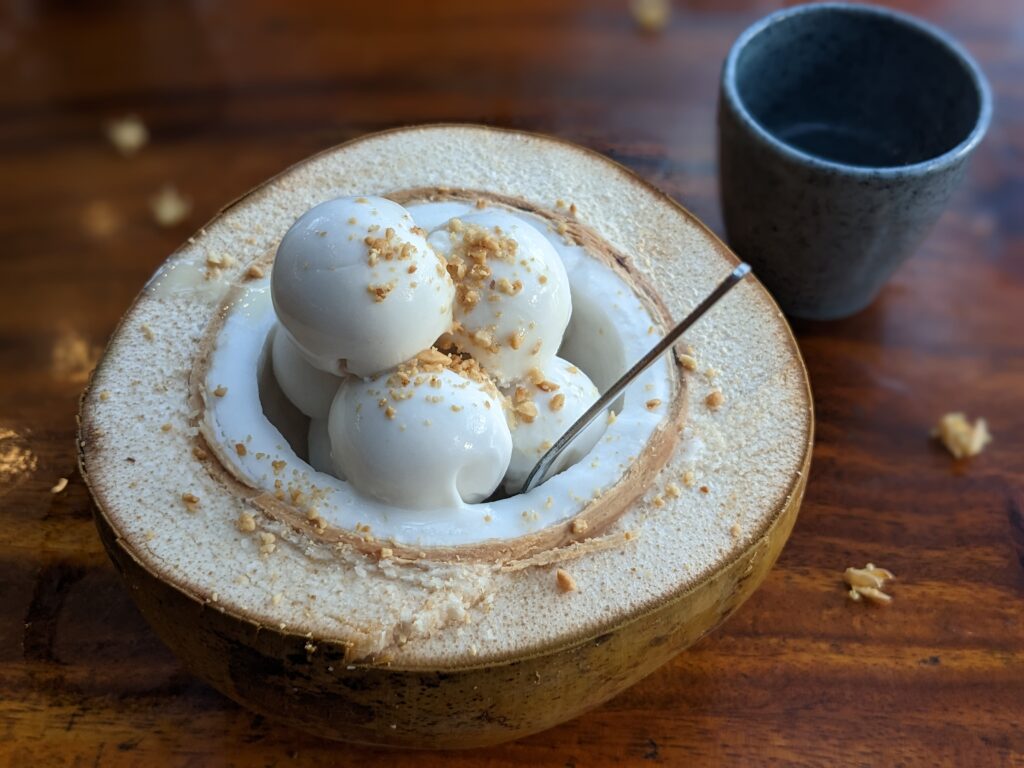
To our great relief, the crossing back to mainland Vietnam was incredibly smooth and the chunder rate remained at 0%. We caught an evening bus back to HCMC and everything was going very well until we went to board our bus after a rest stop to find that it had disappeared 😬 We both had our day bags with passports and valuables so it could have been much worse, but I wasn’t wearing my shoes! On some Vietnamese buses, you take your shoes off at the door and then at rest stops, you can either bring your shoes back out with you and have to faff repeatedly with grubby laces (as Oli did) or borrow from a big box of flip flops (as I did). Unfortunately my borrowed ‘pair’ were a bright orange comedy duo of about a UK size 5 and size 11! Just as I was scurrying lopsidedly up and down the bus stands to check that our bus really was nowhere to be found, Oli managed to ascertain that it had taken itself off to the bus wash and would be back in a few minutes. Phew! Thankfully, the rest of the journey passed without incident and we made it back to HCMC for a quick pitstop before catching a cross-border bus to Phnom Penh, the capital of Cambodia.
